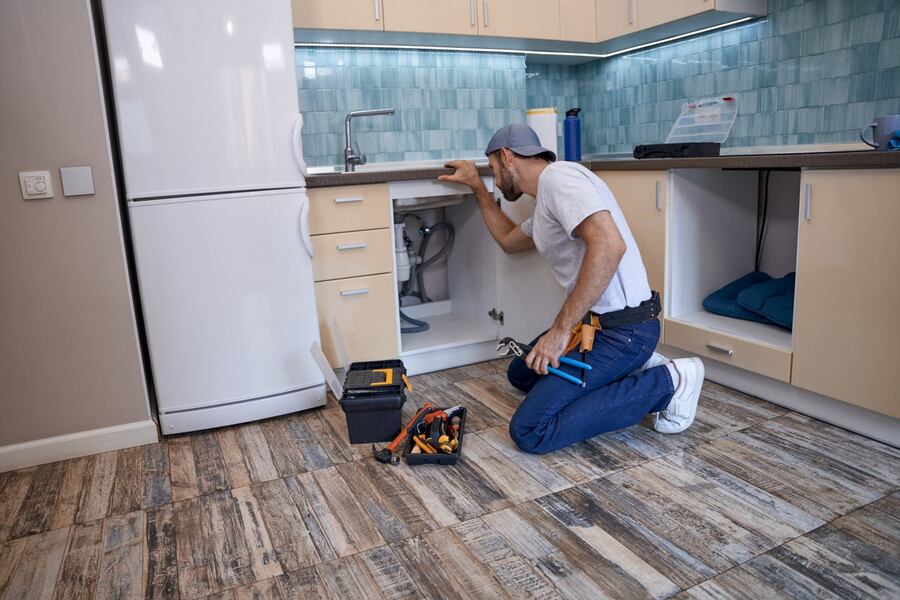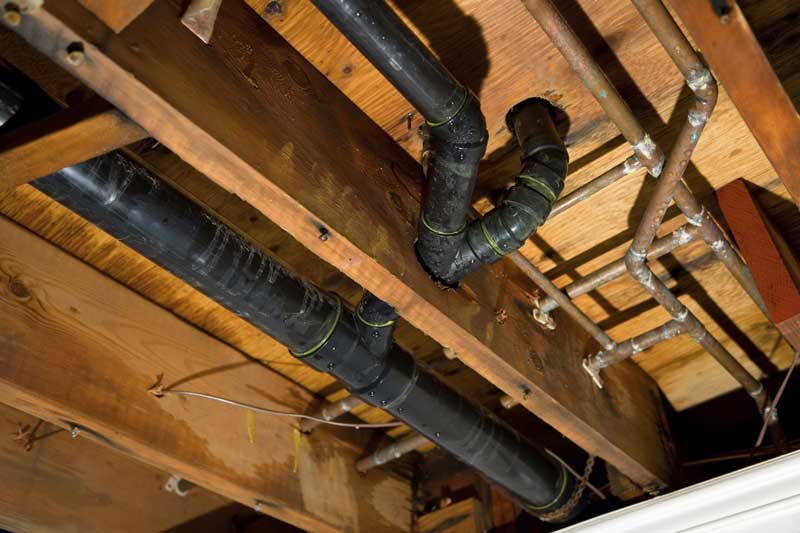Tips on How to Successfully Manage Plumbing Issues in Older Homes
Tips on How to Successfully Manage Plumbing Issues in Older Homes
Blog Article
Every person has their private rationale with regards to Common Plumbing Problems in Older Homes.

Older homes commonly come with beauty, character, and history, yet they can also bring a host of plumbing concerns. Whether you're taking care of aging pipelines, low tide pressure, or leaks, understanding exactly how to attend to these usual troubles is critical to keeping a risk-free and functional home. In this overview, we'll check out the regular plumbing obstacles dealt with by older homes and offer useful options to keep your pipes in top form.
Comprehending Typical Plumbing Problems
Aging Pipes
One of one of the most typical issues in older homes is aging pipelines. Depending on the age in which your home was built, the pipes could be made from products that have actually degraded in time, such as galvanized steel, cast iron, or perhaps lead. These materials can rust, come to be fragile, or develop leakages, leading to water damage and possible health hazards.
Low Tide Pressure
If you're experiencing low tide pressure, maybe due to natural resources, corrosion inside the pipelines, or old components that are no longer functioning efficiently. This can be a significant trouble, specifically in areas like showers and sinks.
Dripping Pipelines
Leaks are one more constant problem in older homes, typically triggered by rusty or damaged pipelines. Also tiny leaks can lead to significant water damages, mold growth, and enhanced water costs otherwise addressed promptly.
Outdated Components
Out-of-date plumbing components such as faucets, commodes, and showerheads not only look old yet might additionally be much less effective, prone to leakages, or inappropriate with modern-day pipes standards.
Pipe Rust
Deterioration is a typical trouble in older pipelines, particularly those made from galvanized steel or cast iron. Corroded pipes can limit water circulation, cause discoloration, and at some point bring about leakages or pipeline bursts.
Examining the Condition of Your Pipes
Inspecting Noticeable Pipes
Beginning by evaluating any kind of visible pipes in your home, such as those in cellars, crawl spaces, or under sinks. Seek indicators of corrosion, leaks, or corrosion, which can indicate underlying concerns.
Checking for Leaks
Look for leakages by inspecting locations around taps, bathrooms, and under sinks. You can also check your water meter prior to and after a period of no water use to detect covert leaks.
Water High Quality Testing
Older pipelines can affect the quality of your water. Conduct a water top quality examination to look for pollutants such as lead, rust, or other contaminations that may be presented by aging pipes.
Solutions for Typical Pipes Concerns
Replacing Aging Pipes
If your home has old, degrading pipelines, consider replacing them with modern-day materials like copper or PEX. This can be a substantial investment, yet it will avoid future issues and enhance the safety and reliability of your pipes system.
Repairing Low Tide Stress
To deal with low tide pressure, beginning by cleaning or changing old fixtures and eliminating mineral buildup in the pipelines. If the issue lingers, it might be necessary to change sections of corroded pipes.
Repairing and Changing Leaking Pipelines
For small leaks, you can make use of pipe clamps or epoxy putty as a temporary solution. However, it's finest to replace dripping pipelines totally to prevent further damages.
Updating Fixtures
Updating old components to contemporary, water-efficient designs can enhance your home's pipes performance and reduce water usage. Seek components with the WaterSense label for the very best effectiveness.
Dealing with Pipe Deterioration
If your pipelines are corroded, changing them with corrosion-resistant materials like copper, PVC, or PEX is the very best option. Normal evaluations and water quality maintenance can aid avoid further rust.
When to Call a Specialist
While some plumbing problems can be taken care of with do it yourself remedies, there are times when it's finest to call an expert. If you're managing major leakages, considerable rust, or are unsure about the problem of your pipes, a certified plumbing can provide skilled analysis and repair service.
Preventive Maintenance Tips
Regular Examinations
Routinely check your plumbing system for indicators of deterioration. Catching problems early can avoid pricey fixings down the line.
Water Stress Guideline
Guarantee your water pressure is within the suggested variety to avoid stressing your pipes and components. A plumbing can install a pressure regulator if needed.
Water Quality Maintenance
Mount water filters or conditioners if your water top quality is poor. This can secure your pipelines and components from damages triggered by difficult water or contaminants.
Proactive Pipeline Substitute
If your home has older pipelines, think about positive replacement prior to significant problems occur. This can save you from emergency repairs and water damages.
Conclusion
Handling plumbing problems in older homes requires a combination of caution, precautionary maintenance, and prompt upgrades. By comprehending the typical challenges and knowing when to look for expert help, you can guarantee your plumbing system remains functional and reliable for several years to find.
Common Plumbing Issues in Older Homes and How to Fix Them
Owning an older home in Australia comes with its unique charm and a set of challenges, especially when it comes to plumbing. The Sunshine Coast has many older properties that can harbour plumbing problems that aren t just inconvenient but potentially costly. Here s a look at some common plumbing issues in older homes and expert advice on how to handle them.
Outdated Piping Materials
Many older homes were built with galvanised steel, cast iron, or even lead pipes, materials that are far from ideal by today s standards. Galvanised pipes are prone to corrosion and clogging, while lead pipes pose serious health risks.
How to Fix:
Replacing old pipes is a job for a professional. Upgrading to copper or PVC piping not only enhances water quality and flow but also increases the property s safety and value. If you suspect your home has outdated materials, a licensed plumber can conduct a thorough inspection and recommend the best course of action.
Corrosion and Pipe Degradation
Over time, exposure to water and minerals can cause pipes to corrode, leading to leaks, bursts, and water contamination. Corrosion is especially common in homes over 50 years old.
How to Fix:
Regular inspections can catch early signs of corrosion. If corrosion is found, the affected section of piping often needs to be replaced. For homes with extensive corrosion, a complete plumbing overhaul might be necessary. It s crucial to consult with a plumbing expert to understand the extent of the issue.
Tree Root Intrusion
Older neighbourhoods usually have mature trees whose roots can intrude into pipe lines, causing blockages or damage. This is particularly problematic for sewer lines, where roots seek out water sources.
How to Fix:
A plumber can use a specialised camera to inspect sewer lines for root intrusion. If roots are a problem, methods like root cutting or hydro-jetting can clear the obstruction. In severe cases, part of the pipe may need replacing. Consider root barriers around the piping to prevent future issues.
Inadequate Water Pressure
Low water pressure in older homes can be due to various factors, including corroded water lines, sediment build-up in pipes, or outdated fixtures.
How to Fix:
First, check if the low pressure is isolated to one area or throughout the house. Replacing old fixtures can sometimes resolve the issue. However, if the problem is more widespread, it might be due to sediment or corrosion. Flushing the system or replacing the affected pipes usually restores normal pressure. Again, a professional assessment is advisable.
Outdated Fixtures
Older homes often feature fixtures that are not only visually dated but functionally inefficient. This includes everything from toilets and taps to showerheads and washing machine hoses.
How to Fix:
Updating these fixtures can improve both water efficiency and the aesthetic appeal of your home. Modern fixtures are designed to conserve water, which can significantly reduce your water bill and lessen your environmental impact.
Conclusion
Maintaining the plumbing in an older home requires a proactive approach. Regular checks and updates are key to preserving these beautiful properties. If you re facing plumbing issues in your older home, it s best to call on experienced professionals like Green & Gold Plumbing & Gas. With the right expertise, even the most daunting plumbing problems can be resolved, ensuring that your home s character is maintained while its functionality is enhanced.
https://gandgplumbing.com.au/common-plumbing-issues-in-older-homes-and-how-to-fix-them/

We were introduced to that write-up about Common Plumbing Challenges In Old Buildings through a good friend on our other web page. Sharing is good. You just don't know, you may very well be helping someone out. Thanks for going through it.
Free Quote Report this page